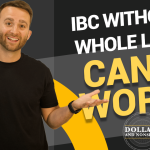Life insurance is a contract between two parties, the policyholder and the insurer. The policyholder pays a premium to the insurer, and then the insurer offers a benefit when the policyholder dies. The benefit is a sum of money intended to ensure financial security to dependents of the policyholder after their death. In this article, we will look at specific types of life insurance called whole life.
But first, let’s look at life insurance in general and then we will get into types of whole life insurance policies.
Essentially, life insurance provides security. It allows for individuals to have a piece of mind knowing that their family, kin, and other dependents will not face a significant financial burden in the event of their death. Unfortunately, all life insurance policies are not created equal. It is essential to understand which policies allow you to maximize your benefits and suit your individual needs.
Examples of life insurance policies
Examples of life insurance policies include term life, universal life, variable universal life, whole life, and many more. Each policy has advantages and disadvantages. This article’s focus is on whole life insurance.
The insurer for life insurance is often a third-party such as a bank. With whole life insurance, the policyholder has complete ownership. This ownership enables you to have more control of your investment and gives you the flexibility to cater the policy to your personal needs. For example, policyholders can borrow against the premiums you have already paid. You are not limited to waiting until death to have access to your money.
How whole life insurance differs
Whole life insurance also differs from other policies in that it offers a fixed benefit. (This is what Wikipedia says about it.) With some life insurance policies, you pay into it with the hope that there will be a significant amount of money received. However, the exact amount you will receive upon death and/or at the end of the policy may is not guaranteed, nor is it known beforehand. Whole life insurance eliminates the guesswork by providing a guaranteed cash value that remains the same throughout the contract, providing peace of mind. It also allows for accurate planning.
Another perk of a whole life insurance policy is that the money grows tax-free. This means the growth of the policy is not dependent on the IRS and the federal government. There are many advantages to having a whole life policy. However, there are some downsides. To reap these benefits, you are often required to pay higher premiums and extra fees.
Additionally, it is a more complicated option, which may be hard to benefit from without the help of a professional. Nonetheless, this policy has been around for over 100 years and is proven to have worked for many people. It gives you control of your contract and ensures you are reaping the benefits instead of a third-party insurer. Therefore, it can be an excellent investment to get you towards financial freedom and security.
All whole life insurance policies are not created equally. There is a wide variety of options to suit your individual needs. Below is a deeper dive into the different types of whole life policies.
Types of Whole Life Insurance Policies:
Let’s look at the types of whole life insurance policies available in the marketplace:
Non-participating Whole Life
A non-participating whole life policy is one of the more common policies people choose. In this policy, you are not participating in investment activities. You have a fixed death benefit, guaranteed cash value, and level premiums. It is a lower cost and lower risk, but it may not see as much growth as other options.
Participating Whole Life
A participating whole life policy, you are participating in investment activities through dividends. A dividend is a sum of money given to members of the company and/or shareholders. Essentially, when the investments do well, the policyholder receives more money. Premiums are often higher with the policy because of the potential for growth. However, it is a bit of a higher risk because dividends are not guaranteed.
Single-Premium Whole Life
In this policy, you pay a lump sum amount to purchase the policy upfront. This is often lower risk because you are deciding how much you would like to have in your death benefit; it is dependent on how much you invest initially. The option has excellent growth potential. The earlier it is purchased, the longer it can have to build-up. A downside to this option is the high cost, and you are charged more substantial fees for canceling the policy within the first few years.
Level Premium Whole Life
Level Premium Whole Life is also a common policy choice. In this policy, premiums are calculated based on the entire duration of the contract or the policyholder’s life. This option offers stability and consistency. The premiums are the same every pay period until the policyholder dies. Additionally, you have the option to pay for a shorter term (ex. 10 years) to fit your needs. It is also a lower risk because the premium price does not change unless specified by the policyholder.
Indeterminate Premium Whole Life
In this policy, the premium payment varies and is based on the performance and projections of investments. If they are doing well, then the policyholder will pay a lower premium. When they are not doing well, premiums go up. However, the premium cost can not exceed the maximum amount. The amount is set at the time the policy is purchased.
Whole Life Economic
This policy works similarly to participating whole life insurance through the use of dividends. However, dividends are used to buy additional life insurance. A benefit of this option is that benefits can grow if performance and projections are doing well. However, it can also decrease if they are not doing well.
Living Wealth tips for developing a whole life insurance policy
Living Wealth believes that to maximize the benefits of your whole life policy; you should purchase the policy with a mutual company and add a paid-up addition (PUA) rider to the policy. A mutual company is one that is not controlled by the stock market. When you put your policy into the hand of a stock company, you do not have a say in how your money is used. Additionally, the extra money made through the investments goes to the shareholders of the company. In a mutual company, the owner is the one who buys the policy – you. This means you can participate directly in the profits and dividends. Moreover, the profits go to you instead of the stockholders.
A paid-up addition (PUA) rider allows for the policyholder to add benefits to the existing policy. This is achieved by buying additional coverage with dividends. By doing this, you are increasing the potential for growth as PUA riders can also increase in value as time goes on. Essentially this helps you add value and cash to an existing policy.
Overall, whether you take these tips or choose to purchase one of the existing types discussed above, whole life insurance is a good option for many. It is generally higher cost, but this price point allows for greater stability, control, flexibility, and potential for growth. This provides peace of mind knowing that your dependents will be taken care of after your death.
Related:






